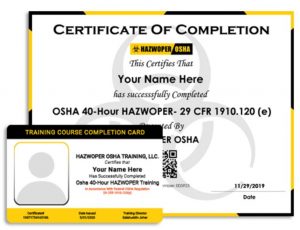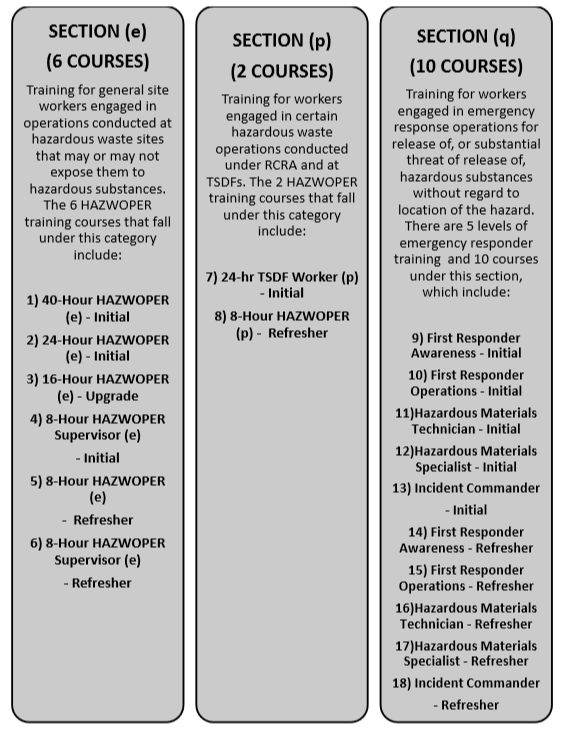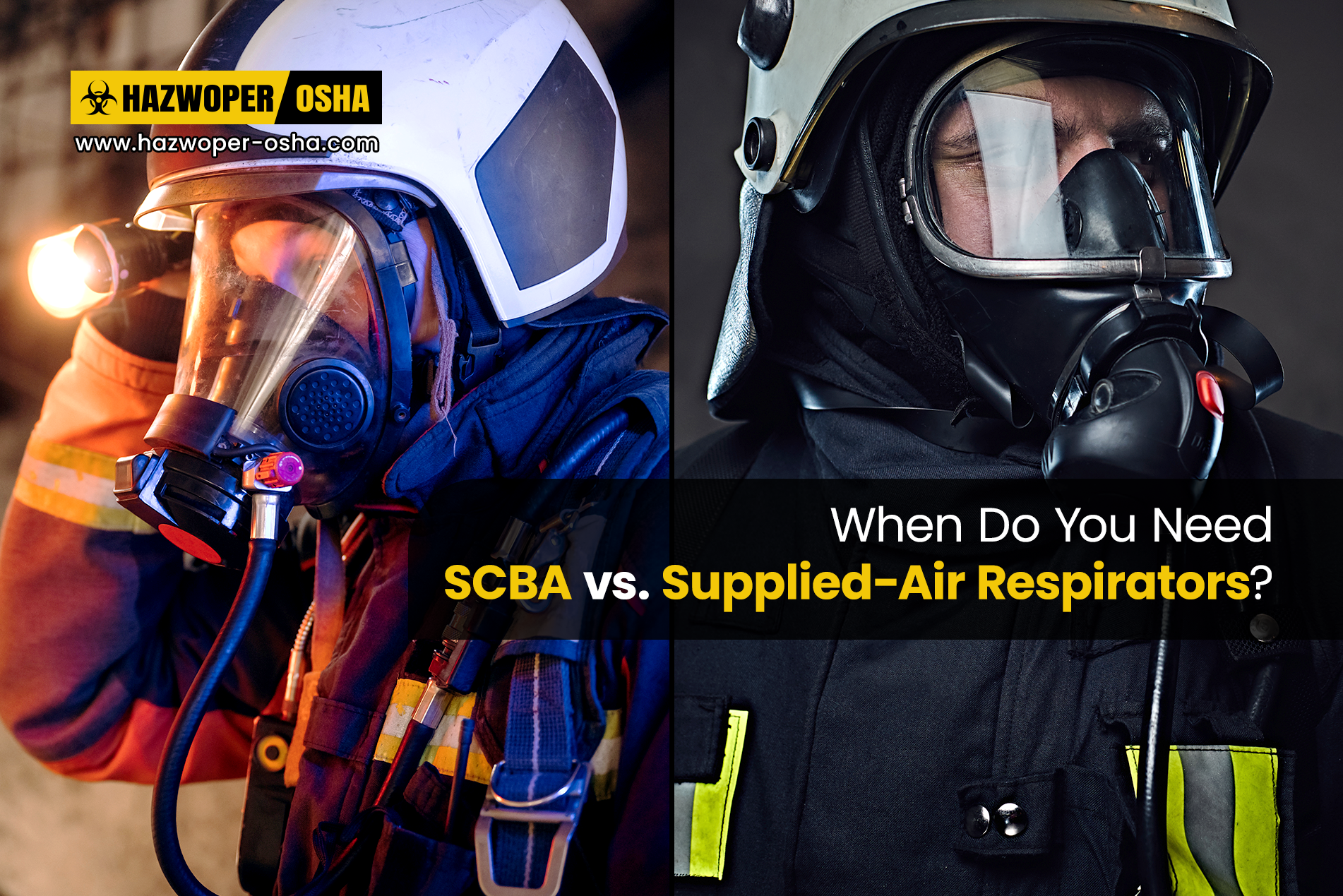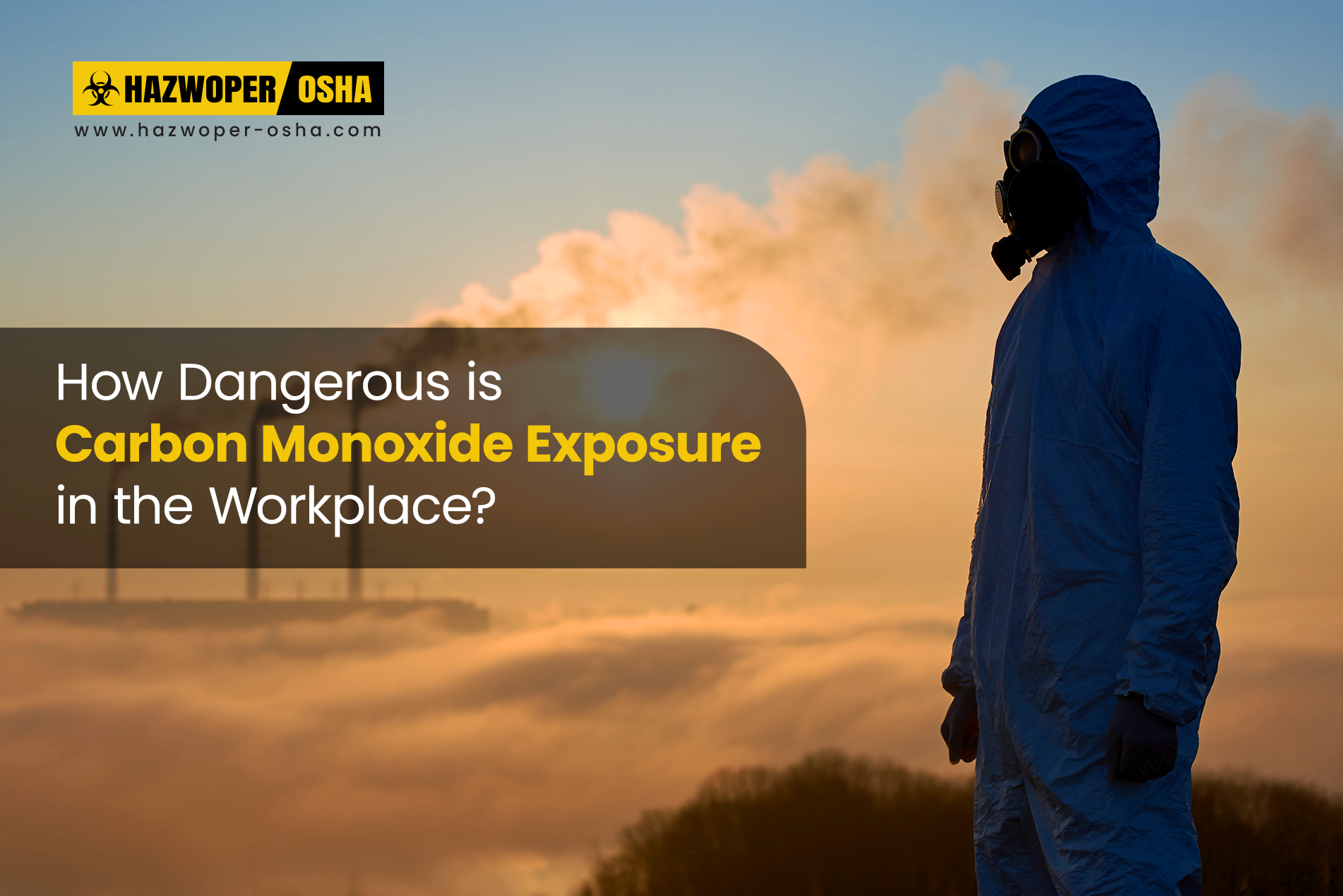HAZWOPER Training – Certification Requirements

The dumping of hazardous waste poses a significant safety and health problem that continues to endanger human and animal life, as well as the quality of the environment that we live in. These hazardous substances will continue to imperil living things and pollute the environment unless they are stored, treated, or disposed of properly.
The Occupational Safety and Health Administration (OSHA) issued its Hazardous Waste Operations and Emergency Response (HAZWOPER) Standard to protect workers engaged in hazardous waste operations and to help them handle hazardous substances safely and effectively.
To comply with OSHA's HAZWOPER regulations, HAZWOPER certification is required for three general categories of work operations as identified by different sections of this regulation:
- Clean-up of uncontrolled hazardous waste sites (section e);
- Operations involving hazardous waste that is conducted at treatment, storage, and disposal (TSD) facilities (section p); and
- Emergency response operations involving hazardous substance releases (section q).
Certain states have OSHA-approved workplace safety and health programs known as "State Plans" which are operated by individual states or US territories. State Plans are monitored by Federal OSHA and must be at least as effective as the Federal regulations.
HAZWOPER Certification Requirements
Workers engaged in work operations that fall into the three general categories as described in the previous section, require the following to obtain a HAZWOPER certification.
Baseline Medical Examination
Workers engaged in operations at hazardous waste sites often perform strenuous tasks clad in personal protective equipment (PPE), such as respirators and chemical protective suits. This makes them vulnerable to heat stress and other related issues. Therefore, the initial step in the HAZWOPER certification process is a standard baseline medical examination. This is essentially a pre-employment screening that focuses on occupational and medical history, physical examinations, and an individual's ability to work while wearing PPE. This information determines whether an individual is physically fit for a certain job, and provides a baseline for comparison with future medical data.
One of the most important aspects of this examination is a medical evaluation to determine an employee's ability to safely use a respirator, which is accomplished through the pulmonary function test (PFT). Employees are required to wear respirators during work operations characterized by exposure to hazardous substances at or above OSHA's permissible exposure limits (PELs).
Spirometry is a common type of pulmonary function test that measures how well a person can move air in and out of their lungs. This test establishes an individual's lung capacity which determines whether they are fit to perform work tasks while wearing a respirator. The Respirator Medical Evaluation Questionnaire is a mandatory component of OSHA's Respiratory Protection Standard as specified in Appendix C.
HAZWOPER Training
Once it is established that the worker is fit for work at a hazardous waste site, next they must receive training to perform their designated work tasks. There are several different types of HAZWOPER training, each of which is tailored to the specific job tasks the worker will perform. Therefore, before a worker receives HAZWOPER training, they must know the basics to decide which level of training is appropriate for them.
There are 18 HAZWOPER training courses, out of which there are 9 initial HAZWOPER training levels. Within HAZWOPER, there are 3 broad areas of training identified by the 3 sections of the HAZWOPER regulation – (e), (p), and (q).

Respirator Fit Test
Now that the worker has been deemed fit to perform work operations while wearing PPE (including respirators) and has received the required level of HAZWOPER training based on their job classification, the next step is respirator fit testing.
OSHA's Respiratory Protection Standard requires that workers must be fit tested with the same make, model, style, and size of respirator that will be used during actual work operations. The respirator fit test must be administered using OSHA-accepted qualitative fit test (QLFT) or quantitative fit test (QNFT) protocols.
The QLFT is simply a pass or fail test. There is no numerical score involved and the results are based on the individual's response to the test agent. On the other hand, QNFT is a number-based assessment of how well a respirator fits an individual. To quantitatively fit test a respirator, sampling probes or other measuring devices are placed to measure the ratio of particle concentrations both outside and on the inside of the respirator facepiece. This ratio is known as the "fit factor."
Once a fit test has been done to determine the best respirator model and size for a particular user, a user seal check (positive and negative pressure checks) should be done every time the respirator is worn to ensure that an adequate face to facepiece seal is achieved. The protocols for user seal check procedures are specified in 29 CFR 1910.134 Appendix B-1.
Hands-On Site-Specific Training
OSHA's HAZWOPER regulation requires that in addition to the training received by hazardous waste site workers off the site, these workers must receive site-specific hands-on training under the supervision of a trained, experienced supervisor before they are allowed to work on a hazardous waste site. Generic training related to the equipment used by HAZWOPER workers does not completely meet OSHA requirements for these workers. Therefore, hand-on training must be performed using the actual equipment that the workers will use on the job.
Annual Refresher Training
Lastly, HAZWOPER workers are required to complete refresher training annually to maintain their initial certification. For some HAZWOPER courses, there is a time requirement for personnel to enroll in and complete the refresher training programs. For other OSHA recommended training courses there is no time requirement, however, competency testing is required.
In conclusion, it is ultimately the responsibility of the employer to adequately train their employees so they may perform work operations safely and effectively. The HAZWOPER certification process for workers is undertaken mutually by the training provider and the employer.

 EN |
EN |  ES
ES

























































































































